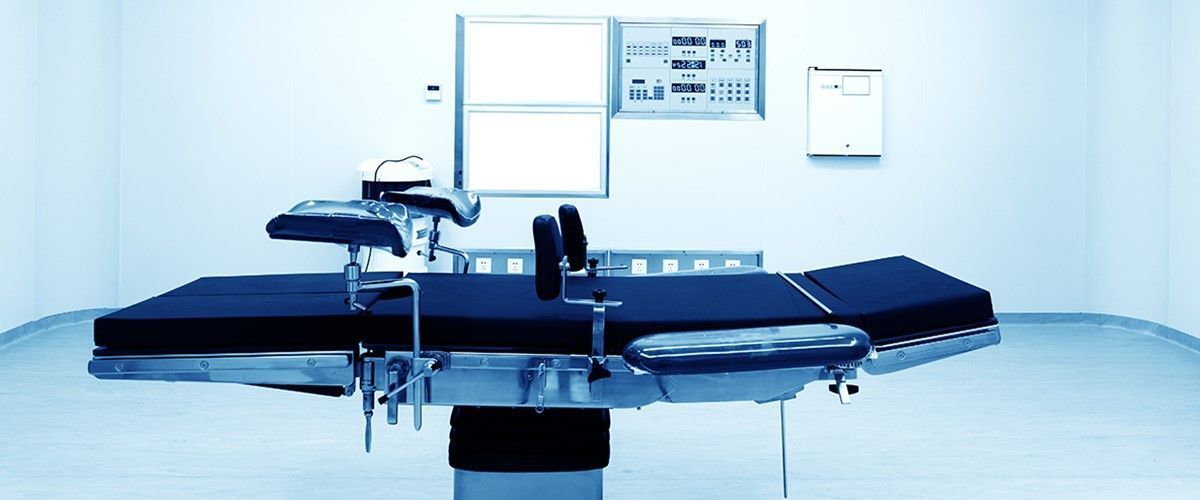The surgical table is the centerpiece of every operating theatre. Surgery after surgery, operating table mattresses are frequently subjected to damaging conditions that can not only cause them to deteriorate, but can also put patients at risk.
As with other equipment in the healthcare environment, operating table mattresses will deteriorate overtime. This is due especially to how often they are used. So the lifespan of these fixtures is further shortened by damages resulting from moisture. Moreover, the cost to replace them is high. It is, therefore, in facilities’ best interest to protect these crucial clinical equipment during surgical procedures. More importantly, if there is no effective barrier to prevent fluids from coming into contact with operating tables, exposure to contaminants through irrigation solutions, blood, or any type of bodily fluid, is to be expected. This expected but preventable outcome leads to a higher risk of cross-contamination and nosocomial infections, which can be life-threatening for patients.
Traditional protection vs. what is needed
Currently, operating tables are prepared involving the use of reusable linen sheets. While cotton and cotton-polyester fabrics are comfortable, drapeable and strong when dry, they deteriorate over time, especially when laundered with hydrophobic agents to eliminate potential bacteria. This deterioration leads to a higher risk of colony-forming particles from shed lint, which play a role in the development of surgical site infections (SSIs), as they can penetrate wounds.¹ In addition, reusable linen sheets have limited capacity for absorption and are ineffective against biological fluids because of their open, woven structure.² To prevent this issue, hospitals tend to implement a range of solutions, including reinforcing linen sheets with underpads. However, this ‘solution’ only guarantees more expenses, longer set-up time and sub-optimal results.
The solution that works while preparing the operating theatre table is simple. Any applied form of barrier must be able to protect not only any type of operating tables but also the patient it supports. Therefore, a highly absorbent solution that prevents pooling effects and maintains the integrity of the patient’s skin is necessary for effective moisture management, as well as a lowered risk of cross-contamination. And, in order to extend the operating table’s lifespan, it is crucial to choose a sheet with impervious backing that will isolate all liquids produced during surgery from the surgical table. This will prevent permanent damages linked to poor moisture management, thereby reducing maintenance costs.
Medline understands moisture management and has supported customers throughout the years with this ongoing disruptive issue. The goal is to promote patient safety and help improve efficiency and reduce costs through our products and services. The Sahara range of protective and absorbent operating table sheets, for example, is specifically designed to enhance and economise the way facilities approach protecting both patients and equipment. These sheets unfold easily, enabling quicker turnover times in the operating theatre. Additionally, the cellulose that each sheet contains, absorbs liquids while offering greater patient comfort that, in turn, helps reduce the occurrence of pressure injuries. These specialised sheets further contain superabsorbent polymers that can absorb up to 40 times their own volume. This then allows each sheet to rapidly and effectively lock liquids away.
These features, combined with built-in imperviousness, help clinicians isolate any form of liquid that is produced during surgery, helping to prevent cross-contamination and nosocomial infections. By doing so, facilities also extend the lifespan of surgical tables.
Visit our solutions page or watch this video to learn more.


Sylvie Doan
Junior Product Manager, Medline Europe
Sylvie, originally from France, holds a Master's in Applied Foreign Languages and International Business. She started her career in marketing and communication and later transitioned to product management when she joined Medline Europe. She is currently based in the Netherlands and manages Medline’s QuickSuite and Primary Care portfolios at the European level. Learn more on LinkedIn.
References:
¹ Edmiston, C, Sinski, S et al. “Airborne particles in the OR Environment”. AORN Journal. June 1999 69(6). 1181-1189.
² Graff, L, Wigglesworth et al. Surgical Drapes and Gowns in Today’s HHS: Moving Forward From Traditional Textiles. Report from an Independent Multi-Disciplinary Working Group. May 2001.1-12.












